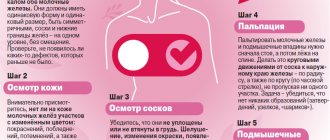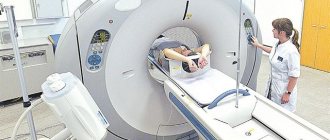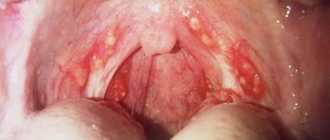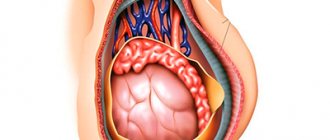A burning sensation in the chest is a clinical manifestation of a number of pathological conditions. The rib cage (or, as it is also called, the chest) is a part of the body that contains the entire chest cavity and the upper component of the peritoneum. They are a “receptacle” for vital human organs. Discomfort in them often signals the presence of pathologies of the heart, liver, gastrointestinal tract or lungs.
You can get rid of this symptom forever only by identifying its initiating factor. To do this, you need to seek professional advice. The specialist with whom you make an appointment will conduct an examination and prescribe appropriate diagnostic tests, thanks to which it will be possible to accurately diagnose, determine a treatment strategy and begin to implement it.
Where to go if you have a burning sensation in your chest?
Are you a resident or guest of the capital and are you faced with a similar problem? Contact CELT. Our clinic is multidisciplinary and has departments of various specializations. You can make an appointment with a cardiologist, therapist, neurologist or gastroenterologist and get the help you need.
Our diagnostic department offers ample opportunities for correct diagnosis and identification of pathological conditions in the initial stages of development. Our staff is staffed with highly qualified specialists: doctors of the highest category, candidates and doctors of science with decades of medical practice behind them.
You can find out our prices by going to the “Services and Prices” tab in this section. To avoid misunderstandings, we recommend that you check the numbers with our operators by calling the number.
How to help yourself with heart pain?
During an attack of heart pain, the main thing is not to panic and try to calm down. It is best to take a horizontal position or sit comfortably, leaning on a support. It is worth removing or loosening anything that may make breathing difficult: collar, tie, belt. Be sure to take 1 tablet of nitroglycerin under the tongue. After 15 minutes the pain should subside. If nitroglycerin does not help, do not hesitate, urgently call an ambulance; the patient may have developed a myocardial infarction.
If pain in the heart appears for the first time, do not rush to make a diagnosis yourself; it may not be a manifestation of cardiac pathology at all. It is necessary to take Corvalol or Validol in a dosage of 40 drops and take the most comfortable position, limiting movements and relaxing.
Physiological causes of burning in the chest
Experts identify a number of initiating factors for such a phenomenon as a burning sensation in the chest. The most common of these is poor diet, including fatty, spicy, salty foods, carbonated water and fast food, along with frequent overeating or eating food before bed.
The above leads to the contents of the stomach entering the esophagus, where it irritates the mucous membrane, which causes discomfort. They are accompanied by nausea, heartburn and belching, as well as bloating. In order to exclude this, it is enough to change your diet by minimizing the above-mentioned foods, optimizing portion sizes and eliminating the consumption of food before bedtime.
The same can be said about excessive consumption of coffee and alcoholic beverages, as well as smoking. All of them can cause a burning sensation in the chest, which will stop as soon as their consumption is reduced to a reasonable limit. It is important to understand that it is not the norm and its appearance is a reason to visit a doctor.
A number of reasons are associated with diseases of the cardiovascular system, characterized by the inability of blood vessels to provide the heart with a sufficient volume of oxygen. This occurs with ischemia, which is manifested by a local decrease in blood supply due to narrowing or blockage of the arteries, due to which the most important organ of the human body suffers.
Do not forget about neurological factors, when a burning sensation occurs due to compression or damage to the nerve ending or in stressful situations, with neuropsychiatric disorders. In addition, it can be caused by pathological conditions characterized by damage to the bronchial mucosa or trachea.
Spinal problems
The spine is connected to many organs, so spinal pain often radiates to the sternum. Often, a pressing dull pain on the left side of the chest may indicate problems in the thoracic spine.
Osteochondrosis
Pain in the chest and back on the left with osteochondrosis usually appears at a serious stage of the disease, when complications arise in the form of a vertebral hernia. In the thoracic region, osteochondrosis is most complex, since it is often accompanied by difficulty breathing and limited freedom of movement.
Injuries
With injuries to the sternum, aching or sharp pain in the left chest may appear, sometimes this is a sign of a rib fracture on the left side of the chest. The nature of the pain depends on the severity of the injury. In some cases, with spinal injuries, pain radiates to the left side of the chest.
Diseases that cause burning in the chest
Only a doctor who has everything necessary for diagnosis can identify the cause of a burning sensation in the chest in the middle, right or left. You should not engage in self-diagnosis, as it is fraught with the risk of complications.
| Diseases | Triggering factors |
| Hearts | Sharp pain and burning in the chest near the heart may be a sign of a serious condition that requires immediate medical attention. This occurs with the following diseases:
|
| Liver | Experts identify a number of diseases of the liver and biliary tract, the symptoms of which are manifested by a burning sensation in the sternum. These include:
Other clinical manifestations of the above diseases are as follows:
|
| Gastrointestinal tract | A phenomenon such as heartburn always leads to a burning sensation and pain symptoms due to irritation of the walls of the esophagus by gastric juice. As for diseases, one of the symptoms of which is a burning sensation in the chest, they are as follows:
|
| Intercostal neuralgia | It is a pain syndrome that develops as a result of damage to the intercostal nerves due to various reasons, ranging from compression to infection or intoxication. This syndrome is a sign that the patient has diseases of the organs of the chest wall, mediastinum, and spinal cord. Clinical manifestations are as follows:
|
| Pneumonia | Acute inflammatory infectious lesion of the lungs, which can be lobar or focal. Symptoms of the first include a cough, a sharp increase in temperature, burning and pain in the sternum, and weakness. As for the second, its onset is hardly noticeable; it appears after acute respiratory diseases. Clinical manifestations in addition to pain on inspiration, shortness of breath, cyanosis, wet cough. |
| Scoliosis | Persistent sideways curvature of the spinal column relative to its axis. A burning sensation in the chest occurs due to the fact that with this disease, abrasion of the intervertebral discs and compression of the nerve endings occurs, which provokes serious discomfort. |
| Intercostal myositis | Inflammatory processes of skeletal muscles located between the ribs. On palpation, pain symptoms appear along the entire intercostal space. Experts identify three pain points: the spinal column, the sternum and its lateral surface. In addition, there is swelling of the affected part, redness or, conversely, paleness of the skin, sore throat, cough and headache. |
Survey
Diagnosis is carried out by a gastroenterologist. When choosing methods, it is assumed that heartburn in the chest is more typical of damage to the upper digestive tract. The examination includes modern laboratory and instrumental studies to assess the functional and morphological state of the gastrointestinal tract. The most valuable in diagnostic terms are:
- Endoscopy
. Endoscopic visualization of the esophageal and gastric mucosa is an informative method for confirming gastroesophageal reflux, the most common cause of heartburn. During endoscopy, it is possible to establish signs of inflammation and detect areas of pathologically altered tissue. If necessary, a biopsy of mucosal areas is taken. - Radiography
. A series of x-rays after oral contrast with barium sulfate is used to detect cicatricial deformities, strictures, and large tumors in the esophagus and stomach. Using radiography, the speed of contrast movement through the gastrointestinal tract is monitored, which makes it possible to assess the contractile function of smooth muscles. - Ultrasound scanning
. Abdominal ultrasound is prescribed to all patients with a burning sensation in the chest as a quick and non-invasive screening method that helps identify nonspecific signs of inflammatory processes or morphological changes in organs. According to indications, targeted sonography of individual organs is performed - liver, pancreas. - pH-metry
. Measurement of total acidity and free hydrochloric acid is used to detect hypersecretion of gastric parietal cells leading to heartburn. Intraesophageal pH-metry has a high diagnostic value; normally, the acidity level should be above 4 units. Additionally, a blood test is taken to determine the level of pepsinogen and gastrin. - Stool analysis
. Diseases of the pancreas and biliary system, which are often accompanied by a burning sensation in the chest, are always manifested by changes in the coprogram. A standard macroscopic and microscopic examination of stool is recommended, and, if necessary, a reaction to occult blood. According to indications, the level of pancreatic elastase is determined.
It is mandatory to conduct manometry to study the contractility of the lower esophageal sphincter. The examination plan for the presence of substernal heartburn includes standard laboratory methods. An advanced biochemical blood test with liver tests is necessary to assess the activity of digestive processes and the functional state of the hepatobiliary system. After excluding organic causes of heartburn from the gastrointestinal tract, a neurological examination is necessary.
The doctor selects drug therapy for heartburn
Which doctor should I contact if I have a burning sensation in my chest?
Regular repetitions of this symptom are a reason to contact a therapist. He will conduct an examination, collect anamnesis, ask questions that interest him - and either prescribe treatment or refer him to:
- gastroenterologist - if gastrointestinal diseases are suspected;
- orthopedist - if osteochondrosis is suspected;
- neurologist - if osteochondrosis is suspected;
- cardiologist - if you suspect diseases of the cardiovascular system.
They, in turn, will prescribe diagnostic tests to make an accurate diagnosis.
Stitching heart pains
A sudden, sharp stabbing pain in the heart is one of the most striking signs of a heart attack, which often leads to a heart attack. You should urgently call an ambulance if the pain radiates to the left arm, neck, lower jaw and back. However, pain has the same character when:
- pericarditis or inflammation of the heart membrane;
- cardiomyopathy;
- neurosis, the localization of which is near the heart;
- coronary spasm, characterized by impaired circulation of the heart vessels.
How is the diagnosis done?
In order to diagnose a symptom, the doctor only needs to conduct a survey and hear the patient’s complaints. The disease causing it can be diagnosed by conducting comprehensive studies. First of all, the patient is examined and a medical history is collected, after which laboratory tests of blood and urine, a detailed blood test, and determination of hormonal levels are prescribed. In addition, hardware tests are prescribed, the selection of which is based on preliminary studies. It could be:
- X-ray of the sternum;
- Ultrasound scanning of the internal organs of the chest cavity;
- Electrocardiography;
- Gastroenterological studies.
Hormonal changes
Often, more painful burning sensations in the heart area appear in women during hormonal changes in their body, for example, during menopause. Unlike heart attacks, the pain subsides with physical effort and returns at rest. In this case, heart medications will not help; treatment will be prescribed by a gynecologist.
Preventive actions
In order to prevent the development of this unpleasant symptom, you need to take a number of measures:
- Treat inflammatory processes in a timely and correct manner;
- Eat right, minimize the consumption of salty, spicy, excessively fatty foods;
- To live an active lifestyle;
- Avoid stressful situations;
- Follow a daily routine, set aside enough time for sleep;
- Regularly undergo preventive examinations.
Don't forget: a burning sensation in the sternum can be a sign of serious illness. Its occurrence is a reason to seek professional medical help!
Make an appointment through the application or by calling +7 +7 We work every day:
- Monday—Friday: 8.00—20.00
- Saturday: 8.00–18.00
- Sunday is a day off
The nearest metro and MCC stations to the clinic:
- Highway of Enthusiasts or Perovo
- Partisan
- Enthusiast Highway
Driving directions
Symptomatic therapy
If heartburn behind the sternum occurs no more than 2 times a week for less than 6 months, this is considered normal and does not require drug treatment. To reduce episodes of burning in the chest, it is recommended to review your diet: give up smoked foods, spicy and fatty foods, and reduce alcohol consumption as much as possible. To prevent gastric contents from flowing into the esophagus at night, it is better to sleep on a high pillow. It is useful to refrain from wearing compression belts, avoid bending the body and heavy physical work for an hour after eating.
The appearance of heartburn in the chest more than 2 times a week and the duration of one attack for more than 1 hour indicates the probable presence of an esophageal disorder or other gastrointestinal pathology. In such a situation, it is necessary to contact a gastroenterologist for examination and prescription of a drug therapy regimen. Until the clinical diagnosis is verified, antisecretory drugs, prokinetics, and antacids can be used to relieve discomfort. Psychotherapeutic treatments are effective for some patients.









